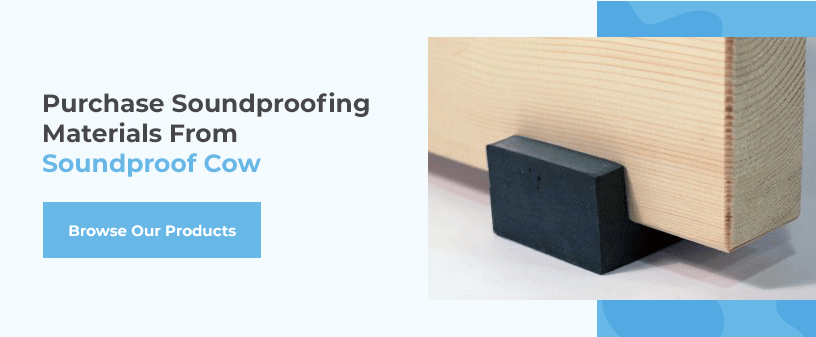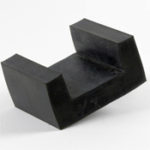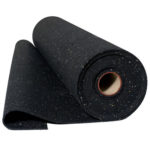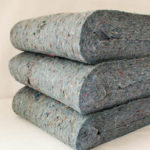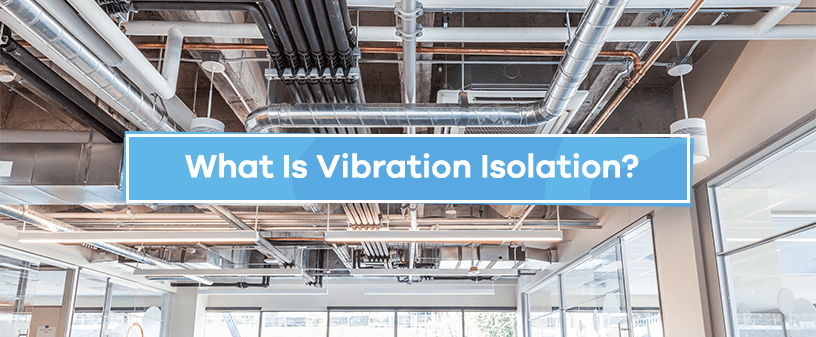
Creating a calm and pleasant space is important for home and business owners. Whether you’re working or relaxing at home, having peace and quiet can help boost productivity and make the space more enjoyable for everyone.
If you have annoying buzzing and vibrations in your space due to an HVAC system or machinery, you can install vibration isolation materials to help manage the problem.
We are breaking down what vibration isolation is and its importance for residential and commercial applications. Managing unwanted sounds and shakiness is simple with the right supplies.
What Is Vibration Isolation?
Vibration isolation refers to a technique used to suppress and minimize unwanted trembling caused by a vibrating device or system.
The installation of an isolator can help effectively interrupt the transmission of vibration from the source to another structure. When an isolator is present between the two, it can absorb the vibrations and protects both sides from friction and quivering.
With an isolator present, the vibration cannot pass from the source to the nearby structures and objects because there is a stable buffer absorbing the shock and mitigating the unnecessary rattling and shakiness.
Introducing vibration isolation materials is highly important for many applications in both residential and commercial spaces.
Why Is Vibration Isolation Important?
Vibration isolation is necessary for mitigating the spread of unwanted vibration that is a nuisance and can be dangerous in some situations. When you take measures to control vibrations, you can effectively combat the adverse effects of persistent trembling and instability.
Vibrations can be one of the most irritating and distracting phenomena. It can negatively impact a space’s acoustics and be bothersome in residential and commercial locations.
If you have a retail space, it is essential to minimize vibrations because they can cause measurable losses for your business. For example, the sounds and quivers could change customer perceptions and experiences with a retail location. If they find the rattling to be bothersome, they will be less likely to return, and negative impressions of your store can affect your bottom line.
However, vibration is more than just a nuisance in homes and businesses. It can also be a dangerous issue, especially in industrial applications involving machinery.
The repetitive vibrating motion can lead to serious damage to equipment and machinery over time. Interrupting the vibration with an isolator is key to avoiding expensive repair and replacement costs. Plus, your space will sound and feel much calmer, which can enhance attitudes and productivity.
Common Vibration Isolation Examples
Many vibration isolation applications occur in industrial environments and require passive isolation systems.
For example, a piece of equipment that needs to be in an enclosed cabinet might require decoupling to minimize friction and vibration.
Vibration isolation springs can be installed between the machinery and its enclosure to absorb and stop the vibration from passing through.
Another common example is if a machine is set directly on the floor. As the equipment operates, it may buzz and bounce, causing unwanted vibrations to pass through the ground. A vibration isolation mount can help mitigate the sounds and shaking from the equipment before they transfer to the floor.
Passive vs. Active Vibration Isolation
Vibration isolation falls into two main categories, passive and active.
Passive isolation systems are the most common type and are used in a more versatile range of applications. They are available in many types and forms, including:
- Ceiling mounted hangers: Vibration isolation hangers help narrow in on high-frequency vibrations generated from suspended equipment such as piping.
- Spring mounts: Spring mount vibration isolators use a metal coil that decouples an object from the vibrational source.
- Shock mounts: This type of isolation mount effectively absorb the vibration with thick, durable rubber materials that help minimize sounds and shakiness from a piece of equipment.
- Wire ropes: Low-frequency applications can use wire rope isolators to dissipate and dampen vibration.
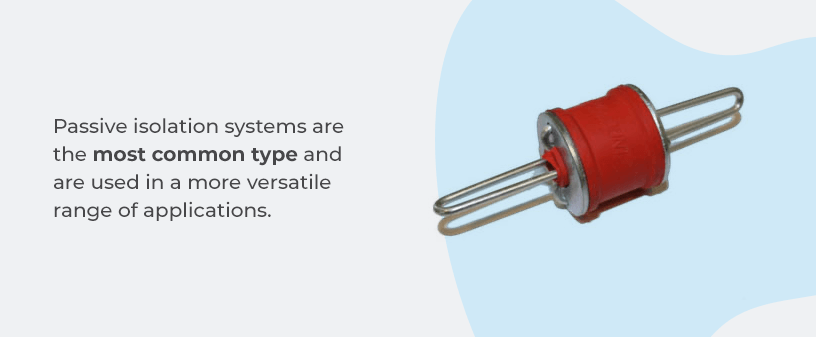
Active systems are slightly more advanced and are used in specialized applications. Instead of utilizing vibration isolation mounts, they work with the following:
- Control circuit
- Sensors
- Actuator
Active vibration isolation systems are better suited for low-frequency performance. They operate using feedback and feedforward control systems that measure vibrational data and signal the actuators to generate equal and opposite force to cancel the vibrations.
How to Address Vibration Isolation Issues in Your Home or Business
Vibration can be an annoyance and hazard to your space. Luckily, there are solutions that will help you minimize the impacts of vibration and create a more serene and peaceful environment.
Explore the following types of vibration isolation products to improve your home or business:
Floor Joist Isolators
One way to minimize vibration is to install floor joist isolators. These devices go over exposed floor joists to decouple the flooring from the structural supports. They are effective in mitigating low-frequency sounds and vibrations from passing from floor to floor in a multi-story building.
Floor joist isolators are U-shaped and typically feature thermoplastic that effectively absorbs and blocks vibrations from passing through. They can help quiet footsteps, equipment noises and other vibrational sources that can interrupt daily life and business operations.
Floor Underlayment
Another way to address vibrational issues in your home or business is to install soundproofing underlayment that creates a barrier between the flooring and the structure. The layer helps to absorb some of the noises that travel between levels.
Similar to floor joist isolators, underlayment decouples the flooring you walk on and the subfloors. This product is made from durable rubber or foam to absorb and block out unwanted sounds and shakiness.
Floor underlayment is a great option for:
- High rise buildings
- Office buildings
- Multi-family housing
- Hotels
Soundproofing Insulation
High-performance soundproofing insulation can also help with vibration isolation issues in your home or business.
While joist isolators and underlayments can help you tackle vibration and sound waves passing from floor to floor in a building, soundproofing insulation helps you address your walls and ceilings.
The insulation will fill out spaces between the metal studs and wood in the wall. It will also help minimize thermal transfer through the wall while minimizing the travel of vibrations from room to room.
Purchase Soundproofing Materials From Soundproof Cow
If you are looking for soundproofing materials for your home, restaurant or retail space, turn to Soundproof Cow. We have a wide selection of high-quality soundproofing products for creating quieter and more enjoyable spaces.
Our team is here to help you find the right soundproofing materials for your unique requirements. We want to help you transform your space and remove unnecessary noises and vibrations. We offer everything you need to improve your home or business, from insulation to floor joist isolators to door seals.
Are you interested in seeing more? Browse soundproofing materials from Soundproof Cow today!



